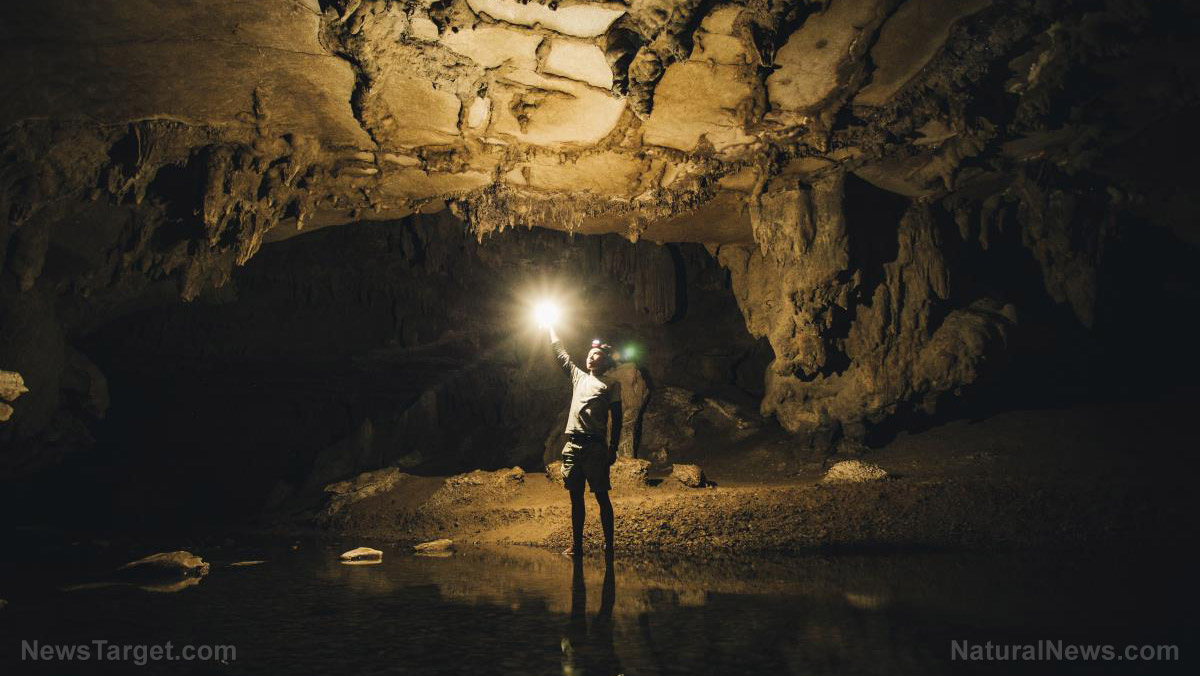World’s most powerful magnet to be shipped to France for nuclear fusion experiment
06/22/2021 / By Virgilio Marin

The world’s most powerful magnet is ready to be shipped to France for a project that will replicate the nuclear reactions taking place on the sun. Made of six magnetic packs, the magnet will be placed in the core of the International Thermonuclear Experimental Reactor (ITER), a $24 billion donut-shaped machine designed to generate electricity via nuclear fusion, or the joining of two or more nuclei.
California-based energy company General Atomics built the magnet in San Diego and will transport it using a special transport heavy truck to Houston. From Texas, the magnet will be shipped to southern France where the tokamak is being built.
When fully assembled, the 1,000-ton magnet measures 59 feet tall and 14 feet wide. It can create a magnetic field with a strength of 13 Tesla, which is 280,000 times stronger than Earth’s magnetic field. Due to its weight, the support structures for it will have to be able to withstand forces equal to twice the thrust of a space shuttle lift-off.
The magnet will play an important role in the project’s mission to establish fusion energy as a safe and virtually limitless source of abundant, carbon-free electricity, according to John Smith, director of engineering at General Atomics.
“‘This project ranks among the largest, most complex and demanding magnet programs ever undertaken,” he said.
Harnessing fusion energy
Nuclear fusion is the nuclear reaction that powers the sun and other stars. In a fusion reaction, two light atomic nuclei combine under very high temperatures to form a single heavier nucleus. This process releases four times the amount of energy produced by nuclear fission, or the splitting of atoms. Nuclear power plants generate electricity through fission.
A feasible way to replicate nuclear fusion is to smash together two widely available isotopes of hydrogen – deuterium and tritium – inside a toroidal (donut-shaped) fusion reactor called a tokamak. This process generates enormous amounts of energy while producing only a neutron and helium, which is a harmless gas.
Fusion does not produce greenhouse gases and long-lived radioactive waste. The risk of nuclear accidents is also low since the reaction simply stops if containment is lost.
The ITER project, a joint research venture involving 35 countries, including the U.S., China, Russia, Japan, India and France, will be a critical test for the technology and laws of physics that underpin the commercial production of fusion-based electricity. The lessons learned from the project will be used for designing the first generation of commercial fusion power plants, which are planned to be brought online between 2040 and 2050. (Related: We are now a step closer to harnessing nuclear fusion.)
“Fusion has the potential to provide safe, environmentally friendly energy as a realistic replacement for fossil fuels during this century,” said Bernard Bigot, director-general of the ITER Organization. “With a nearly unlimited global supply of fuel, it also has the potential – in complement with renewable energies – to transform the geopolitics of energy supply.”
For the organization’s experiment, a small amount of deuterium and tritium gas will be injected into the ITER. The hydrogen gas is then superheated to convert it into plasma, the ionized state of gas. Giant superconducting magnets, including General Atomics’ magnet, will create magnetic fields that will confine the plasma and keep it away from the tokamak’s metal walls.
When the plasma reaches 270 million degrees, fusion occurs and very high-energy neutrons escape the magnetic field. The neutrons will eventually hit the tokamak’s walls and transfer their energy as heat. The heat will then be captured and used for generating electricity.
Powerful magnets needed to enable nuclear fusion
General Atomics’ magnet is America’s biggest contribution to the ITER project. It is among the three arrays of magnets that will create the magnetic fields needed to confine the plasma for long periods of time.
As the central solenoid, the magnet will be placed in the tokamak’s center and will generate the inner magnetic field directed along the “poloidal” direction, or the short way around the torus. A second stack of magnetic rings will be installed just outside of the central solenoid. It will generate the “toroidal” field, which is directed the long way around the torus. These two magnetic fields will create an enclosure that locks the particles in the plasma.
A third stack of magnets, which will be placed around the ring of the tokamak, will produce an outer poloidal magnetic field that will confine the plasma inside the vessel. Together, the three magnets will create a powerful, invisible cage for the plasma that conforms precisely to the tokamak’s metal walls. (Related: New design suggests a solution for next-gen fusion power plants.)
The ITER will be the first fusion reactor to generate more thermal energy than the fuel required to heat the plasma. It will also be the first fusion reactor to sustain fusion for long periods of time. When it goes online, it will generate 500 megawatts of thermal fusion power – more than 30 times the current record achieved on the Joint European Torus, a tokamak located in the U.K.
The ITER is currently 75 percent complete. The final large-scale components will be installed by 2023, with the “first plasma” scheduled to be generated by 2025, according to the ITER team.
Read more stories about fusion power technology at FutureScienceNews.com.
Sources include:
Tagged Under: breakthrough, Clean Energy, electricity, energy, environment, fusion, fusion energy, fusion power, fusion reactor, future science, future tech, future technology, innovation, magnet, magnetic field, nuclear fusion, nuclear reaction, plasma, science and technology, tokamak
RECENT NEWS & ARTICLES
COPYRIGHT © 2017 FUTURE SCIENCE NEWS





















